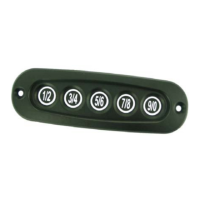Page 1 of 16
e-ASK
electronic Access Security Keyless-entry
e-ASK Keyless-entry System Installation and Instruction Manual
OEM / Dealer / Installer
Cargo Lock/Unlock Version
This manual provides the necessary information for the proper installation and use of
TriMark’s e-ASK system. Included in this comprehensive access, security, keyless-entry
system are the following elements:
• e-FOB: keyless entry radio frequency [RF] remote FOB transmitter and receiver
• e-PAD: Convenient keypad user interface
• e-ASK: I/O module
The following illustrations are provided to properly identify the contents of this system.
e-FOB with RF receiver,
2 remote transmitters FOBs,
and wiring harnesses
e-PAD keypad e-ASK I/O module
(Note: Horizontal or Vertical e-PADs are available)
UM04
18990-04
01/05-2




